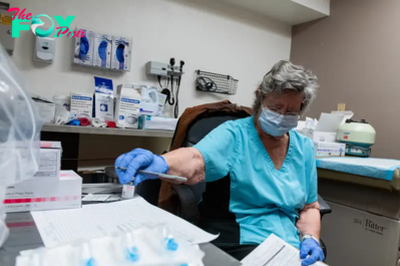Health
Colorado locked up middle-aged women for “lunacy,” old jail ledger reveals
GOLDEN — The leather-bound ledger smells of tobacco and dust, each page listing the names of people booked into the Jefferson County Jail more than 100 years ago.
The men in the ledger, identified in old-timey cursive as immigrants, Native Americans and miners, were mostly booked for crimes typical in Golden’s mining heyday — drunkenness, bootlegging, fighting and murder.
The most common charge for women, however, was lunacy.
Of the 280 charges against women listed in the book, 74 are for “lunacy” or “insanity.” And of those women, at least 31 were sent from jail via train to what was then called the Insane Asylum at Pueblo. That’s 26% of all charges against women.
The Golden History Museum, a collection of dinosaur fossils and mining-era artifacts along Clear Creek, first used the ledger to investigate a 1879 lynching long part of town lore. Two men who murdered a well-liked Golden citizen and stole his wagon were pulled from jail by an angry mob and hung from a trestle bridge.
But as museum curator Stephanie Gilmore and program assistant Bianca Barriskill turned the giant pages of the 1878-1929 ledger, some stained with ink blotches or coffee, what jumped out at them was the number of times women were locked up for being “insane.”
The discovery set Barriskill on a monthslong exploration that included three trips to the old mental hospital in Pueblo, where she read logs listing what the women were wearing when they arrived, who dropped them off and whether anyone ever visited them again. The rich women arrived with silk dresses; the poor ones, muslin.
Want to learn more?
Bianca Barriskill will discuss her findings during tonight’s “Women and Lunacy” program at the Golden History Museum, 6-7 p.m.
What Barriskill’s research uncovered was a sad tale of Colorado women — typically middle-aged — who were committed to the asylum by their husbands and sometimes never visited again. Death certificates and asylum records show many women lived there until their deaths.
The average age of the women charged with insanity in the jail ledger, Barriskill found, was 40.
That’s right about the time perimenopausal symptoms might begin, Barriskill could not help but speculate about.

“Why is it that the majority of the women who were institutionalized for insanity were in their post-childbearing years and in that post-menopausal arc?” Barriskill asked. Were their husbands and male doctors so clueless about the hormonal effects of menopause that they mistook them for mental illness? When wives could no longer have children, were they discarded by their husbands?
“I couldn’t make that claim, nor should I,” Barriskill said, though she does wonder.
It’s worth noting that records from the day show juries — not husbands — made the final determination about sending someone to the asylum.
There are 4,300 people listed in the 175-page ledger, and 93% of them — 4,000 people — were men, according to the Golden History Museum’s count, which involved deciphering the cursive in the old book and entering the information into a spreadsheet. Museum workers have found just 72 men who were booked for insanity or lunacy, though they are still counting the final 10 years of the 50-year ledger.
The museum bought the ledger in 1999 from the daughter of former Jefferson County Sheriff Arthur Wermuth, paying $2,500. Wermuth apparently took the log book as a memento in 1958, some time after it had been placed in storage in the basement of the sheriff’s office. His daughter had wrapped it in a pillowcase.

Most of the women in the ledger have been lost to history, identified by their husband’s last names and listed as “housewife.” But Barriskill did help lift one from obscurity.
As it turned out, her relatives in the Pacific Northwest were trying to do the same thing.
Diagnosed with insanity, and syphilis
At age 17, German immigrant Anna Marie Simmendinger, who was called Mary for most of her life, arrived in the United States by boat. She married a fellow German immigrant named Gustave Schneller, and the couple settled first in Pennsylvania, and then in Golden, where Gustave operated a bar called the Goosetown Tavern.
They were married for about two decades and had two sons. Then, when Mary was in her early 40s, she was picked up by Jefferson County sheriff’s deputies and booked under the charge of “insanity.” The jailhouse ledger shows she was sent to the asylum in Pueblo in 1907.
-

 Health7h ago
Health7h agoThe Surprising Benefits of Talking Out Loud to Yourself
-

 Health9h ago
Health9h agoDoctor’s bills often come with sticker shock for patients − but health insurance could be reinvented to provide costs upfront
-

 Health1d ago
Health1d agoWhat an HPV Diagnosis Really Means
-

 Health1d ago
Health1d agoThere’s an E. Coli Outbreak in Organic Carrots
-

 Health2d ago
Health2d agoCOVID-19’s Surprising Effect on Cancer
-

 Health3d ago
Health3d agoWhat to Know About How Lupus Affects Weight
-

 Health5d ago
Health5d agoPeople Aren’t Sure About Having Kids. She Helps Them Decide
-

 Health5d ago
Health5d agoFYI: People Don’t Like When You Abbreviate Texts



























